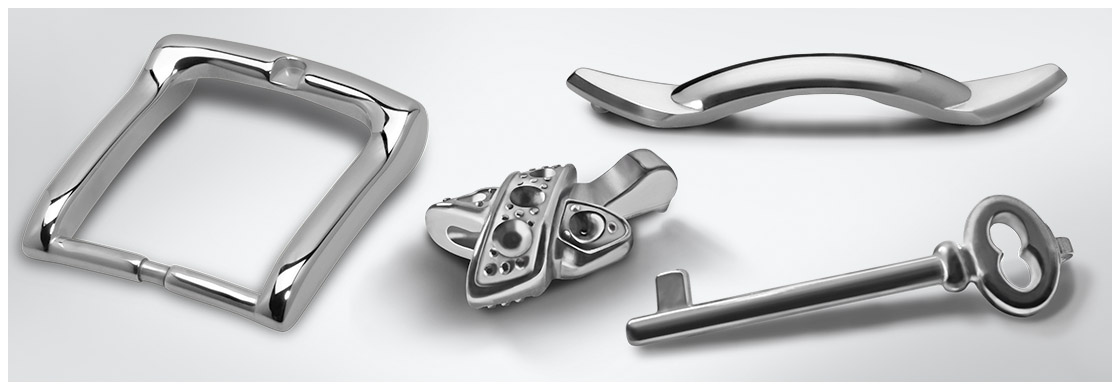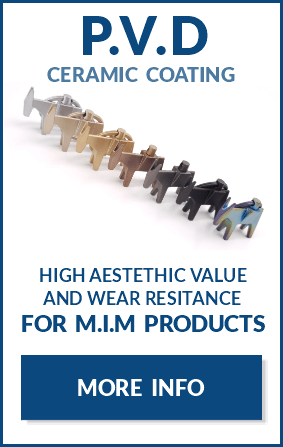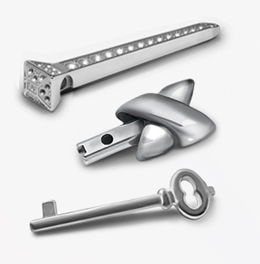News
Next
Photogallery
Stainless steel is certainly the most important material in MIM technology in terms of tons produced per year. In particular, the austenitic stainless steel AISI 316L is one of the most common materials in this sector thanks to the excellent properties that this material has: an excellent corrosion and impact resistance, a high ductility and toughness, and an excellent stability.
Stainless steel AISI 316L was the first metal that Silcon Plastic processed by MIM in 2008.
These properties result from the particular steel’s chemical composition, which includes a chromium content of 16-19 wt%: it allows the formation of a thin passive and protective layer on the material’s surface that prevents corrosion.
Furthermore, the low carbon content (0,03 wt%. In AISI 316L, “L” stands for “low carbon”) prevents the formation of chromium carbides during thermal treatments, which would cause corrosion due to a sensitization effect.
17-4 PH is the most widely used of all the precipitation-hardening stainless steels. It can be used in the aerospace, chemical, petrochemical, food processing and, generally, in the fashion sectors. 17-4PH stainless steel provides a good combination of high strength, good corrosion resistance and good toughness.
The parts resulting from the process can be used once sintered without any further heat treatment or subsequently processed with an aging heat treatment.
In the first case the parts are more ductile; in the second case they are less ductile but more resistant thanks to the precipitation of carbides which causes a strengthening effect on the material without having a decreasing of corrosion resistance.
The following table contains the properties of stainless steel AISI 316L and 17-4PH processed in our facilities:
| C[wt%] | σy [MPa] | UTS [MPa] |
ɛf[%] |
|
| MIM AISI 316L | 0,03 | >140 | >450 | >40 |
| MIM 17-4PH | 0,07 | >660 | >800 |









